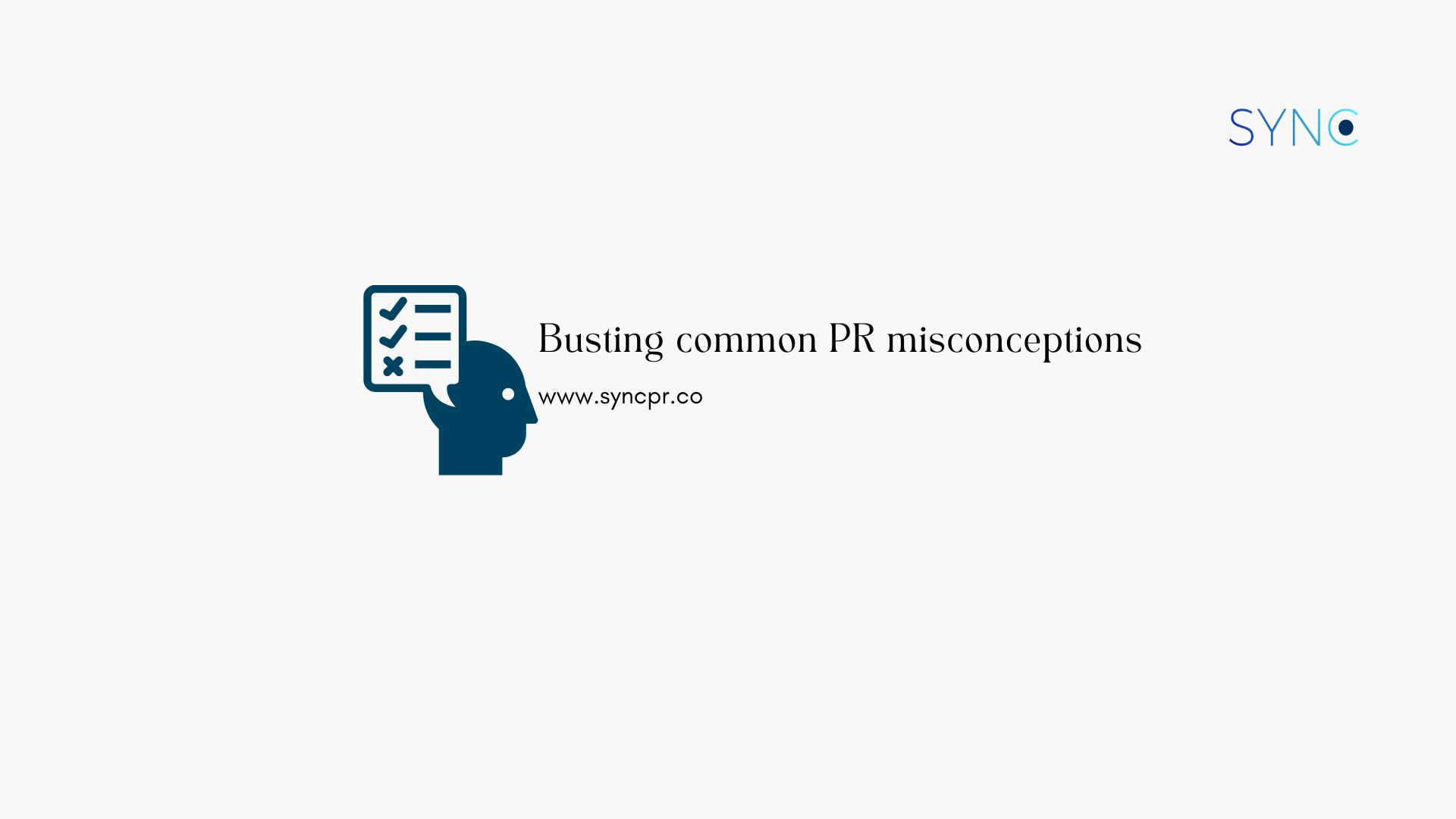There are quite a few common PR misconceptions that lead to misunderstandings and confusion about the value of PR. That’s neither good for the PR industry nor for entrepreneurs and business owners who can benefit by leveraging PR as a tool for business growth and scalability.
Some common PR misconceptions include: What does a PR team do? Does PR bring any value to businesses? Isn’t PR manipulative? Unfortunately, these questions are as old as the concept of PR in the workplace. The public has long been misinformed about what a PR team does and the effort that goes into handling PR. Beyond merely creating excitement or handling emergencies, PR represents a strategic effort that connects organisations with their audiences through open communication and meaningful interaction.
It is not about distortion or control, but rather about establishing trust, managing reputations, and nurturing enduring connections. This article examines and dispels prevalent misunderstandings about PR and aims at busting common PR misconceptions, showcasing its diverse role and highlighting its essential function in shaping perceptions and cultivating credibility in today’s communication landscape.
Common PR misconceptions: PR is manipulative
One of the most common PR misconceptions is that PR professionals are spin doctors who manipulate facts to create a positive image. In reality, ethical PR involves transparent communication and fostering genuine relationships between organisations and their stakeholders. It is important to note that while PR helps maintain a positive brand image of the organisation, its main job is to clear any misunderstandings potentially bringing harm to the organisation.
PR involves accurately presenting facts in a clear and relevant manner that aligns with your objectives and values, rather than lying or concealing information. It focuses on fostering and sustaining positive relationships with your audiences, rather than misleading them. Additionally, PR practitioners adhere to ethical guidelines established by industry associations to promote honesty, fairness and accountability, ensuring committedness to truthfulness in their communications and interactions. The Malaysian government has prioritised honest communication by recently introducing the Malaysian Code of Ethics for Journalists. This guideline aims to enhance professionalism and integrity within the media, ensuring it remains a trusted source of information and news for the public.
Common PR misconceptions: PR only works for big brands and conglomerates
Some individuals might assume that PR exclusively serves large brands and conglomerates, believing it to be too costly and intricate for small businesses and individuals. However, PR is accessible to organisations of any size, across all industries, and with varying budgets. PR can help even the playing field, build brand connections and create a strong brand identity for companies regardless of size.

Effective PR strategies can help small businesses gain visibility, build credibility and attract investor interest. By crafting compelling stories, small businesses can leverage social media to build relationships with relevant influencers and consumers, effectively positioning them at the top of their industry and competing with larger competitors.
Common PR misconceptions: PR is a one-way communication channel
PR used to be seen as a one-way channel where organisations or individuals sent messages expecting consumers to passively receive and accept them. However, this outdated approach is ineffective because it overlooks the feedback, opinions and needs of the consumers. Modern PR operates as a two-way interaction where organisations and individuals engage in dialogue with their consumers, listening to and learning from them, allowing them to adapt their future approaches to cater towards them.
Modern PR utilises the two-way symmetrical model as it is considered the most sophisticated and ethical practice of public relations. This model aims to focus on communication that fosters a mutually beneficial relationship between the organisation and the stakeholders themself. This minimises the potential imbalance of power that organisations hold, embracing a wider social responsibility perspective. Consequently, this model considers both the interests of the organisation and the stakeholders to produce a mutually beneficial result.
Common PR misconceptions: Bad publicity is still good publicity
Bad publicity is never a good thing. It has been commonly misunderstood that bad publicity helps generate attention and traffic, leading to a temporary increase in exposure and stakeholders. However, the fact of the matter is that bad publicity is a coin-flip of failure or success with the majority of the results following the former. Bad publicity can ruin the reputation of the organisation, and in the process hurt the sales of said company.
The source of this misconception stemmed from the success of circus showman PT “The Greatest Showman” Barnum, who built his entire business empire on live acts and curiosities. The success of his business laid the foundation for the misconception of bad publicity to be rooted in the public’s perception. Despite the success of PT Barnum, his story is considered the exception and not the rule. In modern society, reputation is even more vital as companies are shaped based on the public’s actions and perspectives.
Common PR misconceptions: PR is easy and anyone can do it
Easily the most misunderstood, successful PR demands strategic insight, creativity, adeptness in relationship-building, and a good grasp of media dynamics and audience behaviour. Public relations is a rigorous and complex field that demands a diverse skill set, extensive knowledge, creativity, and diligent effort. PR professionals navigate tight deadlines, manage multiple projects, engage with diverse stakeholders, address complex issues, and handle unpredictable circumstances.
Success in PR hinges not merely on the benefits it offers, but also on the outcomes achieved through strategic efforts. Mastering this necessitates experience and specialised knowledge to navigate effectively, encouraging positive organisational performance.
PR at the core of business growth
PR is more than just generating attention; it encompasses strategic planning, transparent engagement, and forging enduring relationships with various stakeholders. By viewing PR as a dynamic process, organisations and individuals can leverage its capabilities to enhance credibility, effectively manage reputations, and cultivate lasting connections.
If you want to understand PR and how it can help your business, drop us an email at hello(a)syncpr.co.

